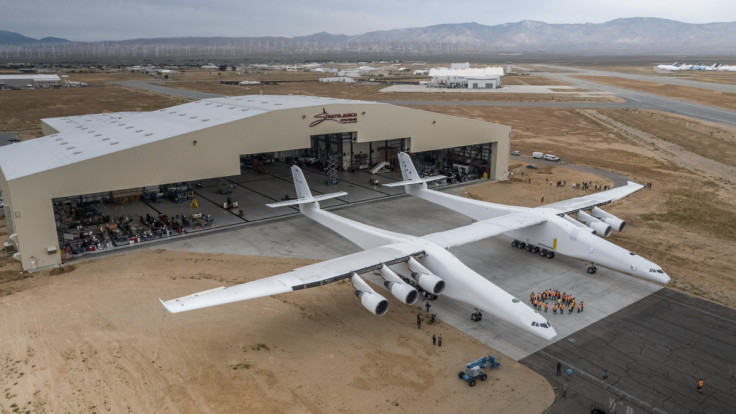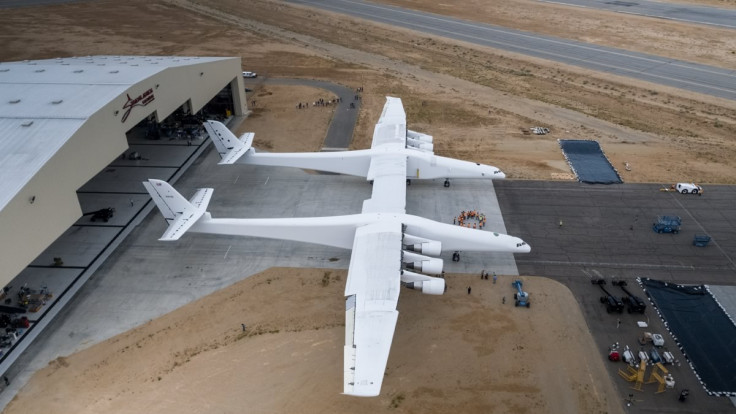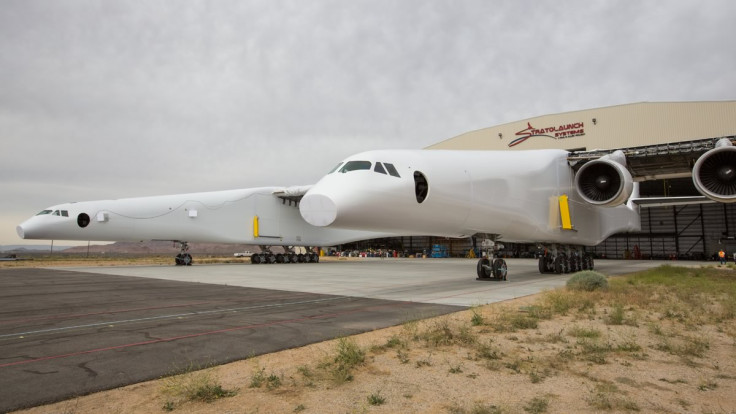Stratolaunch: Amazing facts about the world's biggest plane
With Paul Allen's super plane close to take-off here are five things you need to know.

Billionaire Paul G. Allen's Stratolaunch, a massive aircraft designed to launch rockets into space from high altitude, has been rolled out of its hangar for the first time in preparation for testing.
Here are things to know about the program that has been underway since 2011:
Stratolaunch facts: Size
The Stratolaunch aircraft is enormous, with a wingspan totalling 385 feet (117 metres), longer than the wingspan of any other aircraft and greater than the length of an American football field. Its twin fuselages stretch 238 feet.
By comparison, the H-4 flying boat — nicknamed Spruce Goose and built by Howard Hughes in the 1940s — has a 320-foot (97.5-metre) wingspan and is just under 219 feet (67 metres) long.
Among commonly seen aircraft, the double-decker Airbus A380's wings span 262 feet (nearly 80 metres).

Stratolaunch facts: Weight and power
The Stratolaunch aircraft weighs 500,000 pounds (226,799 kilograms) empty, can carry 250,000 pounds (113,399 kilograms) of fuel, and with payload can take off at a maximum weight of 1.3 million pounds (589,676 kilograms).
It is powered by six engines of the same type used by Boeing 747s.
Stratolaunch facts: Air launch
On launch missions, Stratolaunch will carry as many as three rockets attached to the centre of the wing between the two fuselages. The rockets will be released, ignite their engines and carry small satellites weighing up to 1,000 pounds (453.6 kilograms) to low Earth orbit.
Under a deal announced last year, Stratolaunch will use Pegasus XL winged rockets provided by Orbital ATK of Dulles, Virginia.
According to Stratolaunch, the advantages of its system include being able to use numerous airports and avoid the limitations of fixed launch sites which can be impacted by weather, air traffic and ship traffic on ocean ranges.

Stratolaunch facts: History
Airborne launches date back decades, most famously to the X-15 program of the 1950s and '60s, when manned rocket planes were carried aloft under the wing of a B-52 bomber and released on hypersonic research flights.
In the 1990s, Orbital Sciences Corp. (now Orbital ATK) began releasing rockets from the belly of a converted L-1011 airliner to put small satellites into low Earth orbit.
More recently, Paul Allen, the Microsoft co-founder, funded development of the Burt Rutan-designed SpaceShipOne, the first privately developed manned spacecraft.
Suspended between the twin-fuselages of a special jet, SpaceShipOne was carried to high altitude and released. It reached space on three suborbital flights in 2004.
The same launch concept is being used for SpaceShipTwo, the passenger-carrying craft being developed for Sir Richard Branson's Virgin Galactic space tourism enterprise. A spinoff, Virgin Orbit, is also developing an air launcher for putting small satellites into space.

Stratolaunch facts: What's next?
The rollout Wednesday at Mojave Air & Space Port in the desert northeast of Los Angeles followed removal of scaffolding used during construction and placement of the aircraft on its 28 wheels for the first time.
Initial testing will focus on filling the six fuel tanks to ensure they are properly sealed and that related mechanisms are operating properly.
The aircraft will then be taken back inside the hangar for weight and balance testing. Ground testing will lead to flight operations and the first launch demonstration, which is expected in 2019.
© Copyright IBTimes 2025. All rights reserved.





















